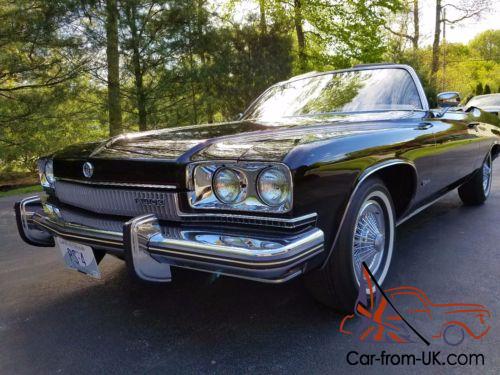

Turbo Hydra-matic transmission, variable ratio power steering and power front disc brakes were again standard equipment.

This was due to an industry-wide change in horsepower measurements from the gross method by a dynamometer outside a vehicle with no accessories installed to a SAE net method in which horsepower was measured as installed in a vehicle with accessories and emission controls hooked up. Under the hood, the standard and only available 455 cubic-inch V8 was rated at 250 net horsepower, which represented an "on-paper" decrease from the 315 gross horsepower rating in 1971. The 1972 Centurion featured minor appearance changes including a revised vertical bar grille and taillight lenses along with a 5 mph (8.0 km/h) front bumper a year ahead of federal mandates for such bumpers in 1971. Total sales were 29,398, exceeding the Wildcat, by nearly 25%. Variable-ratio power steering and power front disc brakes were standard equipment during the entire model year. In March 1971, the three-speed Turbo Hydra-matic transmission became standard on all Centurions as well as the lower-priced LeSabres. Interior trim was upgraded from LeSabres with a notchback bench seat including center armrest standard equipment along with more luxurious cloth-and-vinyl or all-vinyl upholstery.

What also separated the car from the LeSabre was that when the car would be ordered or recognized as a Centurion it would be branded as a 4P as the first two letters of the Vehicle Identification Number. This was known as the A9 and B6 Option when ordering the car.
#9134399746 buick centurion manual
The Centurion was also offered in the 455 Stage 1 and a Manual Trans configuration as well during the early portion of the 1971 model year. The '71 Centurion produced 315 hp (235 kW) rpm and 510 ft The Centurion was offered initially with only the 455 in³ big-block V8 in two power output ranges determined by the presence of either a single or dual exhaust. Replacing the Wildcat as the mid-line full-sized Buick positioned between the lower-priced LeSabre and the larger and more luxurious C-body Electra 225, the Centurion was promoted more as a mid-level luxury car than the Wildcat, which was marketed as a sporty/luxury performance car. The two-door hardtop shared the same semi-fastback roofline with the LeSabre and other GM B-body cars, but had a distinctive and smaller rear window for a somewhat more formal look along with a standard vinyl roof. Body styles included two-door and four-door hardtops, and a convertible. Visually, the Centurion was nearly identical to the contemporaneous Buick LeSabre, featuring different badging and grillework, minimal chrome trim, and marked by an absence of the VentiPort usually found on full-size Buicks. First seen on a concept car, the name Centurion was very similar to the name Century.


 0 kommentar(er)
0 kommentar(er)
